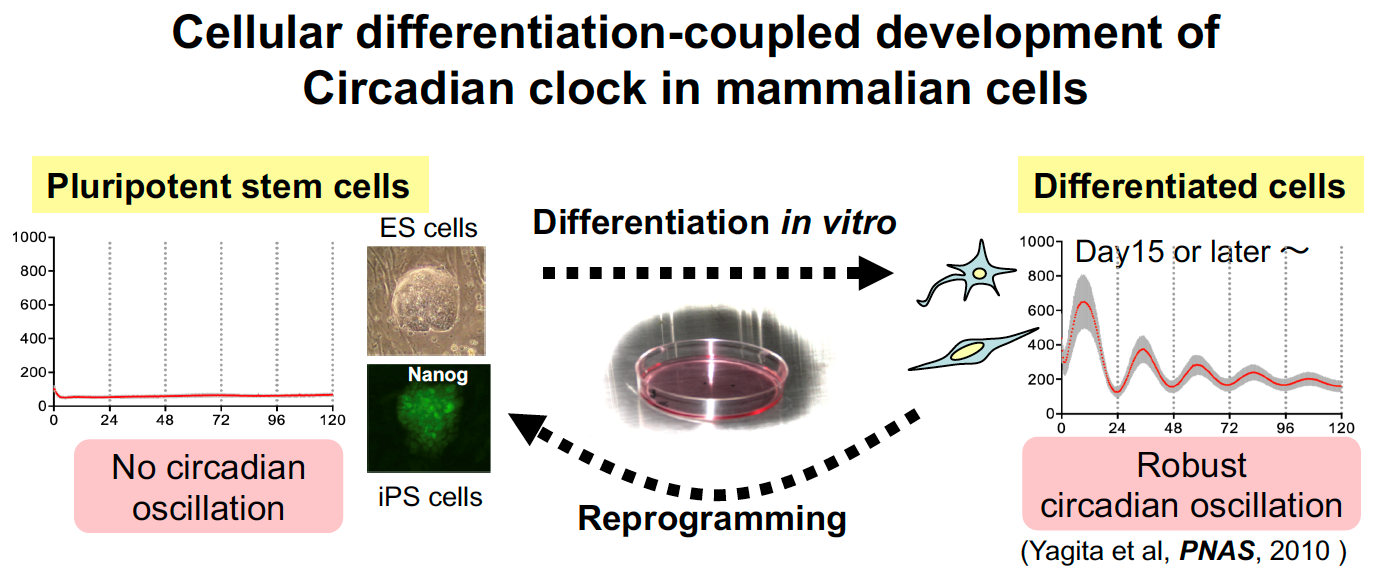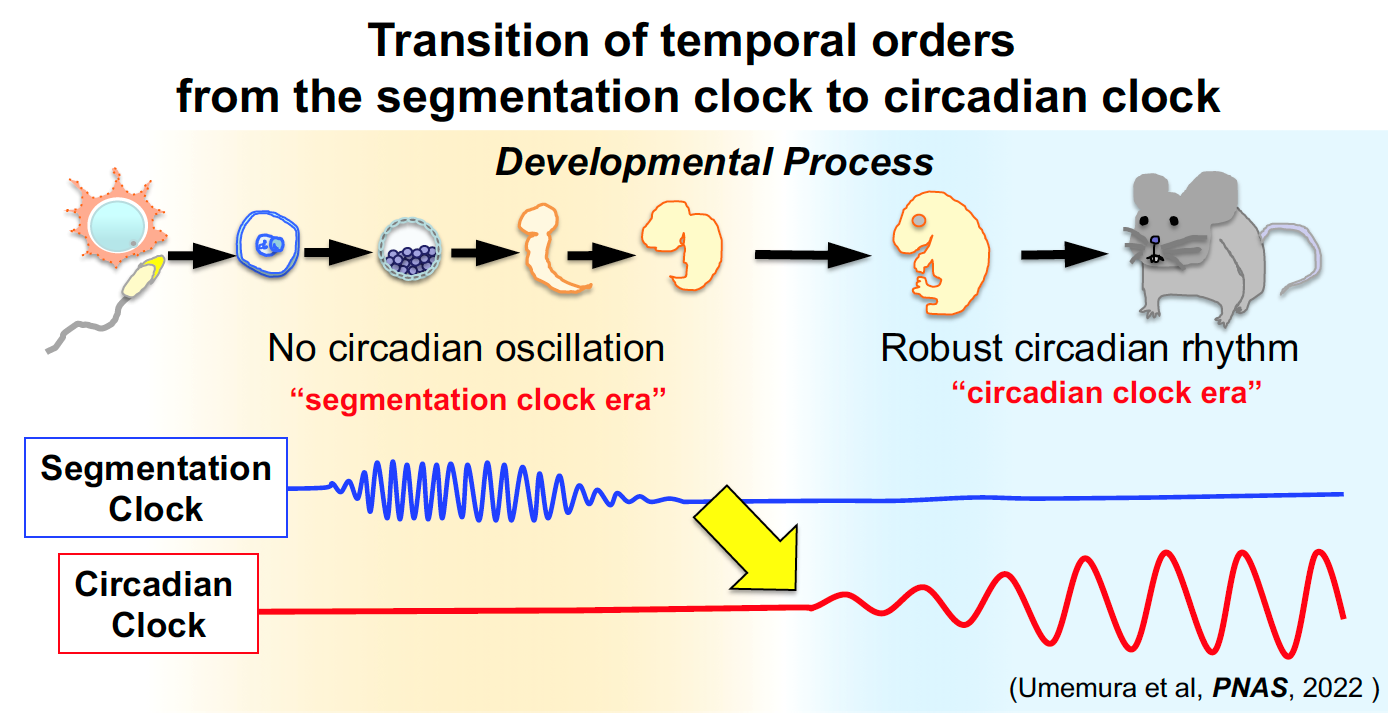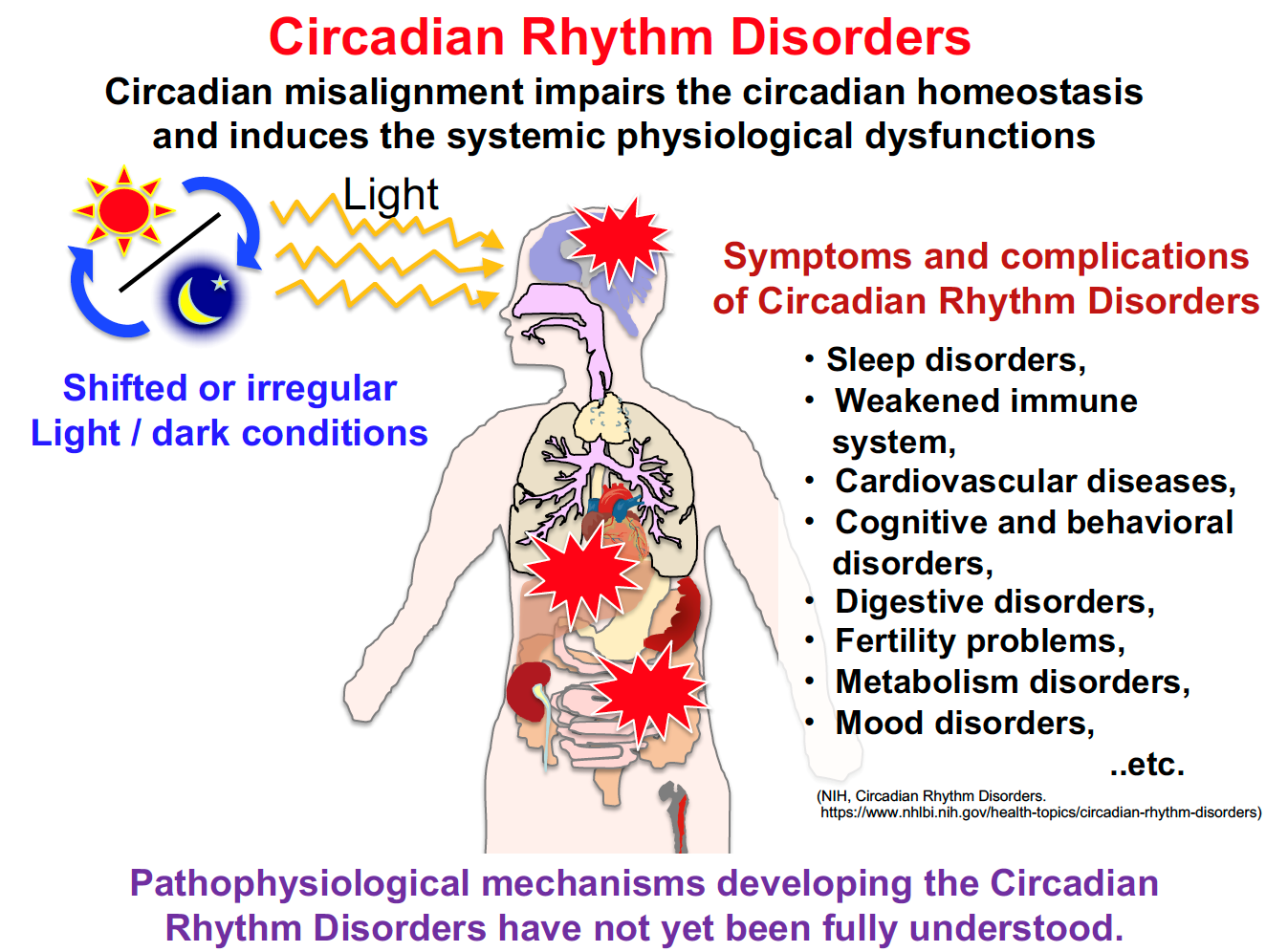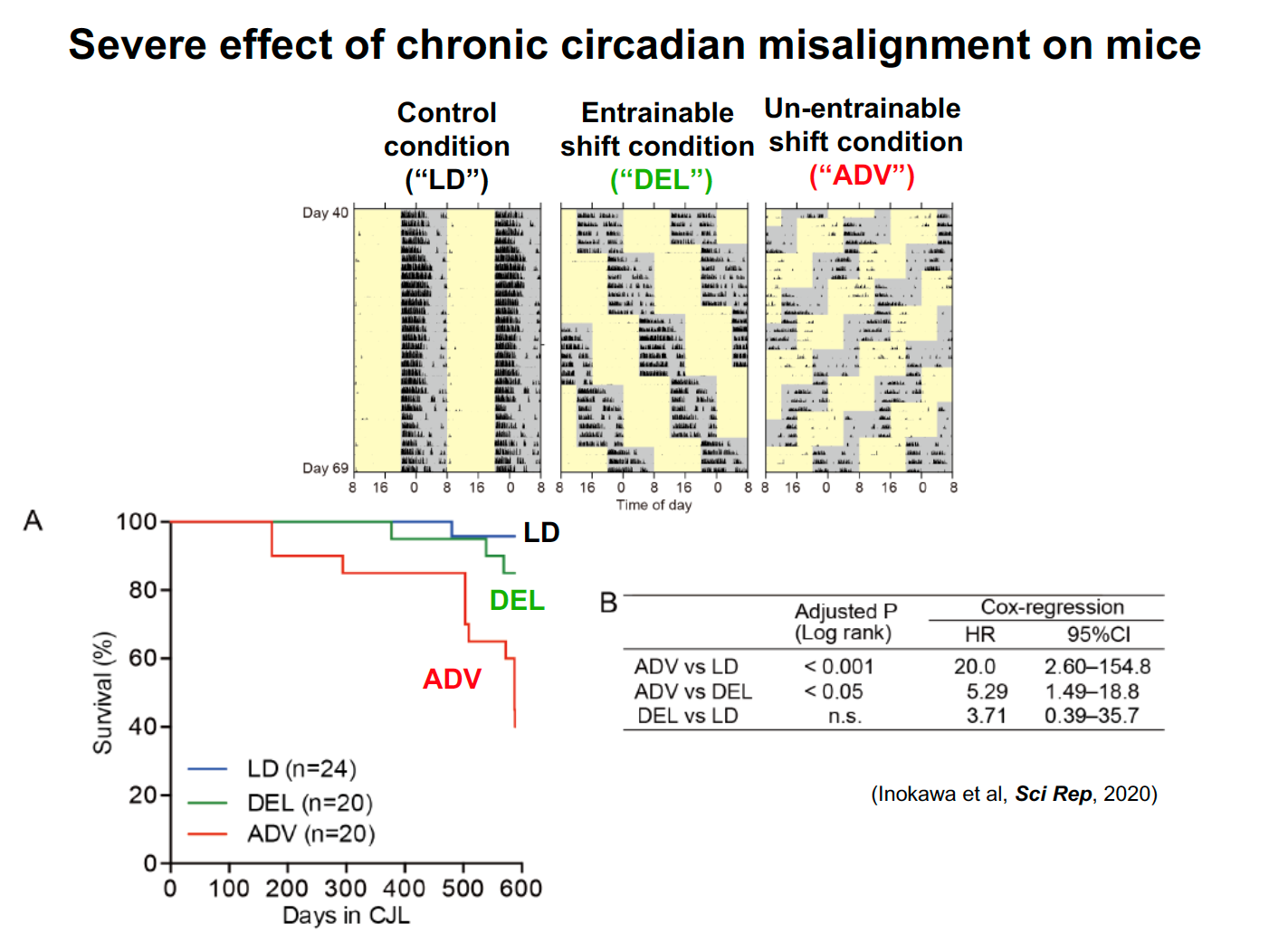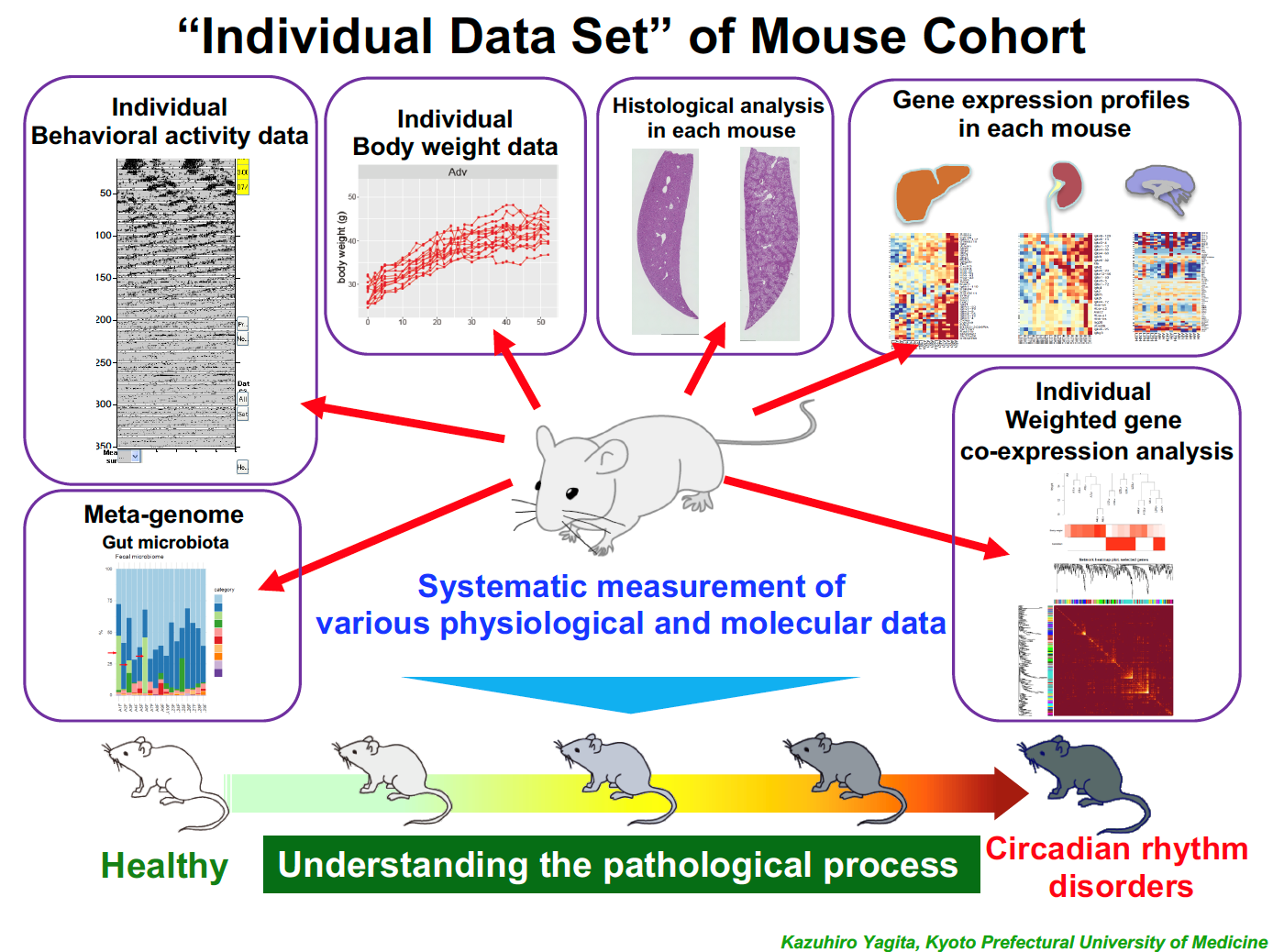| Subject | Physiology and Systems Bioscience | ||
| Staff |
Lecturer: Nobuya Koike, PhD.
Lecturer: Yoshiki Tsuchiya, PhD.
Lecturer: Yasuhiro Umemura, PhD. Assistant Professor: Yuh Sasawaki, PhD. |
||
| Research Contents |
Principles and Human Physiology Life acquired a circadian clock as an adaptation mechanism to the diurnal variation of day and night caused by the rotation of the Earth, which is the most fundamental environmental change. By assimilating frequency of the Earth into the cells through the circadian clock, it became possible to keep the orderly coordination of biochemical reactions and physiologies as homeostatic system of our body.
What is Circadian Rhythm, for us and all living organisms? This is our main question. The discrepancy between environmental time and the body clock is known to disrupt circadian rhythms and affect our health in various ways. The study of circadian rhythms including emergence, maintenance, and misalignment, will lead to the understanding of the mechanisms of disease development caused by such environmental factors. We aim to elucidate the principles and solve social problems by considering the elaborate and flexible circadian rhythm, which controls environmental adaptation and temporal order to maintain our homeostasis.
We have recently clarified that the biological clock is not present in pluripotent stem cells such as ES cells and iPS cells, but is formed in conjunction with development and cell differentiation (PNAS, 2010). In addition, it was found that the formation of the biological clock is accompanied by synchronous adaptation to the environmental rhythms of the outside world (maternal rhythms) (PNAS, 2017). These findings suggest that the circadian clock is an interface between the external environment and the internal physiology of the body. In other words, the body clock is a physiological function that creates time order in the body in relation to the environment, and is the basic principle of the operating system of life. Interestingly, we observed the transition of two different types of rhythms during the developmental process, from segmentation clock to circadian clock (PNAS, 2022). During somitogenesis, circadian clock-mediated 24-hour temporal order is likely to be suppressed not to allow to interfere the segmentation clock. Our goal is to elucidate the biological control system based on the biological clock from the understanding of the principle of the circadian rhythm and the control mechanism of homeo-dynamics that penetrates the hierarchy of molecular, cellular, tissue, organ, and individual levels.
2) Circadian rhythm disorder as pre-symptomatic disease
In recent years, globalization and IT have led to the shift to 24-hour urban functions. The number of shift workers, including those who work late at night, continues to increase, and it is estimated that more than 12 million people, close to 30% of the working population, are engaged in such work. In addition, with cities filled with light even in the middle of the night, and the spread of smartphones and tablets, lifestyle changes are spreading even to children. In such a 24-hour society, it is becoming more and more difficult to maintain the normal living environment of regularity and early to bed and early to rise. In such a modern society, the discrepancy between the "biological clock," which originally evolved as a tuning mechanism to the earth's rotation cycle, and the time we spend in our daily lives is leading to various health problems and increased risk of diseases.
However, simply telling people to live a regular life or to go to bed early and wake up early is not a solution to the social problem at all. Essential workers are indispensable for safe and comfortable society. How do environmental factors, such as deviations in lifestyle and body clocks, affect the physiological functions and cause changes in molecular mechanisms at the cell level? Research on the mechanism of homeostasis disruption due to environmental factors is currently an uncharted field with little progress due to the huge barrier of individual differences. We are challenging this difficult scientific question with new approaches. Recently, we succeeded to develop a new approach named "mouse cohort model" to deduce the process of circadian disorders. Using this, we showed that the circadian misalignment exactly resulted in the deleterious consequences in mice (Sci Rep, 2020). The environmental perturbation disrupting circadian temporal order severely impairs the homeostasis. We are now trying to answer the question how does the environmental perturbation induce the sequence of circadian disorders.
In our laboratory, we are also developing "human physiology" that aims to solve health issues in today's 24-hour society by elucidating the principles of "environmental adaptation," "pre-symptomatic state," and "individual differences".
|
||
| Achievements |
|
||
| Contact |
tel 81-75-251-5313 |
||
| HP |









